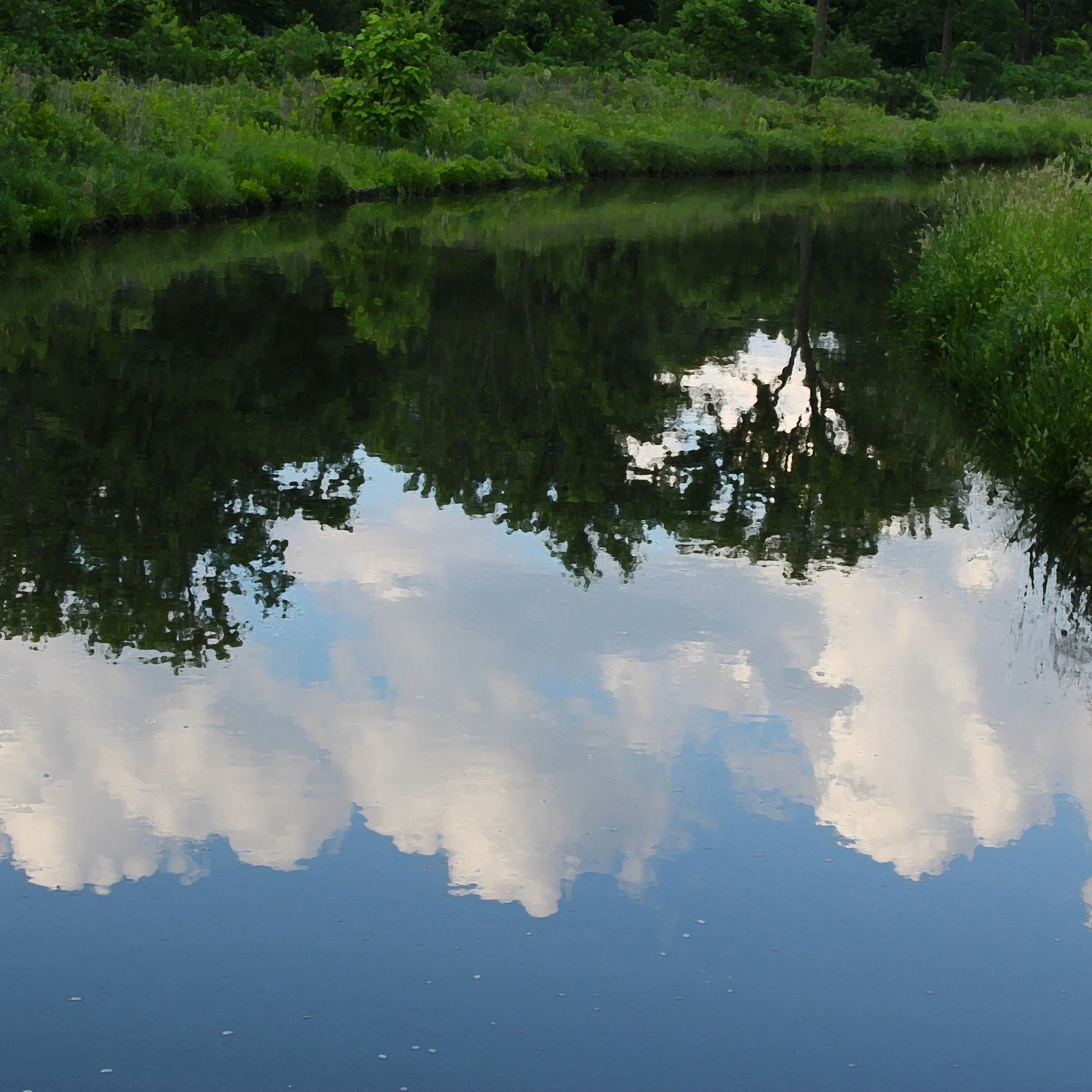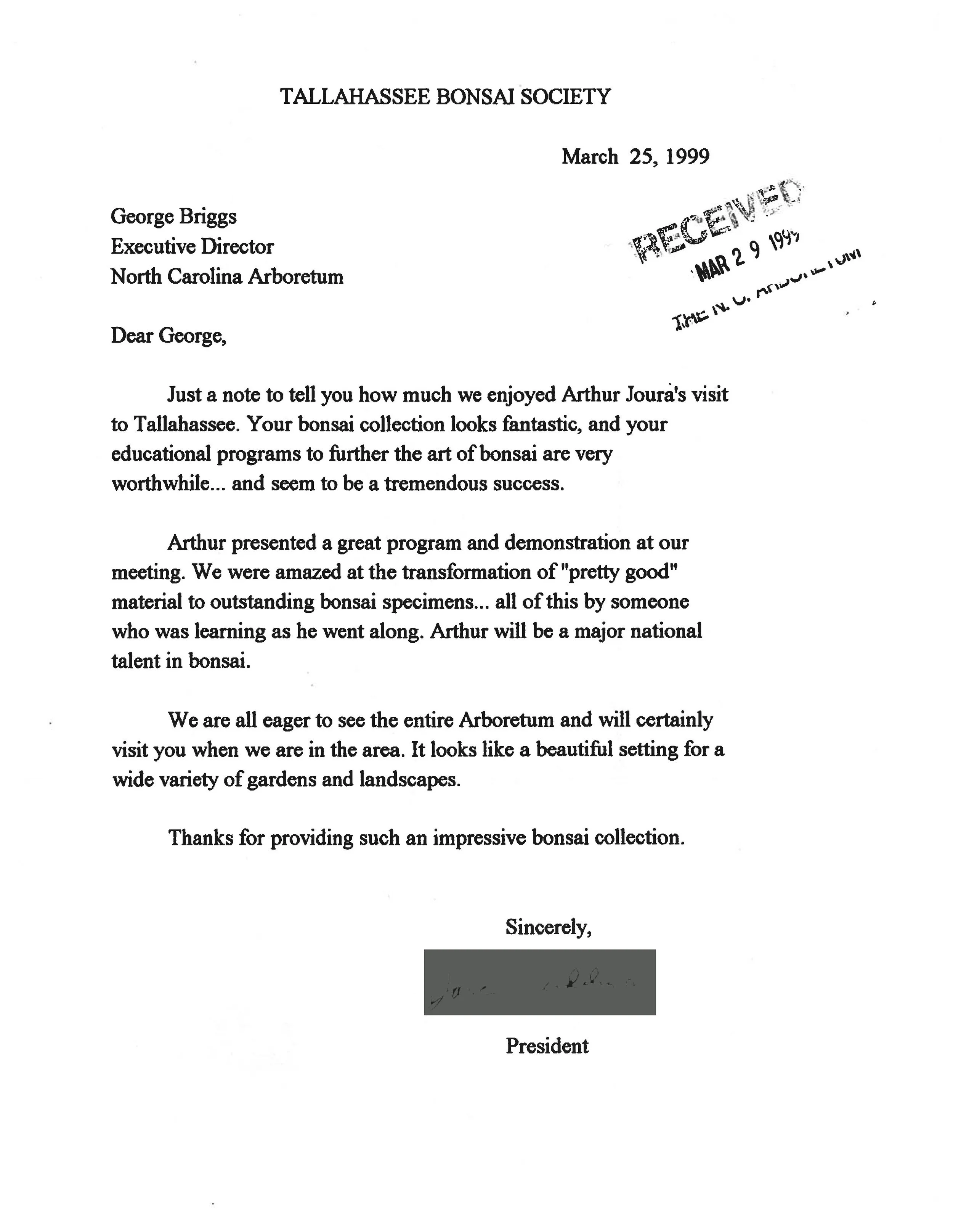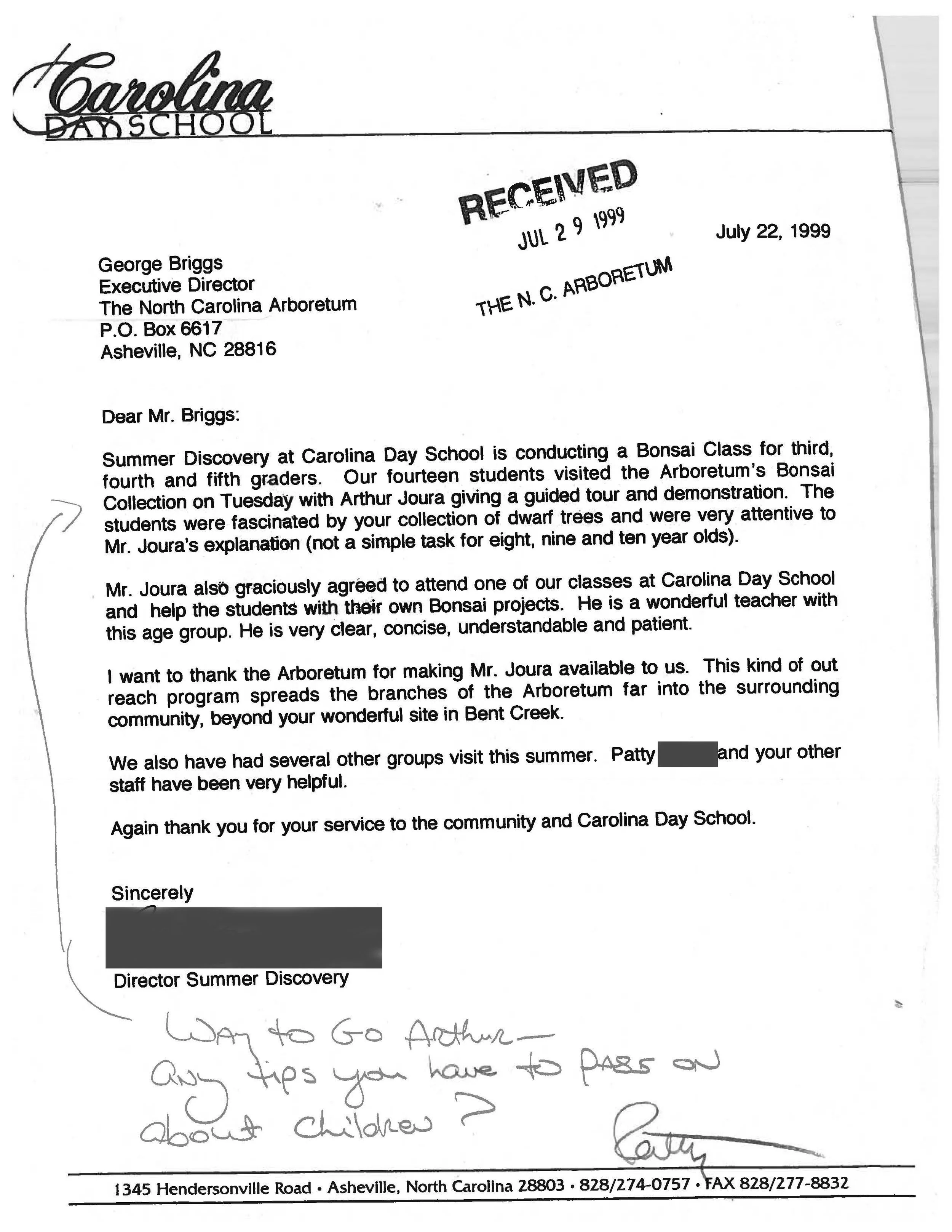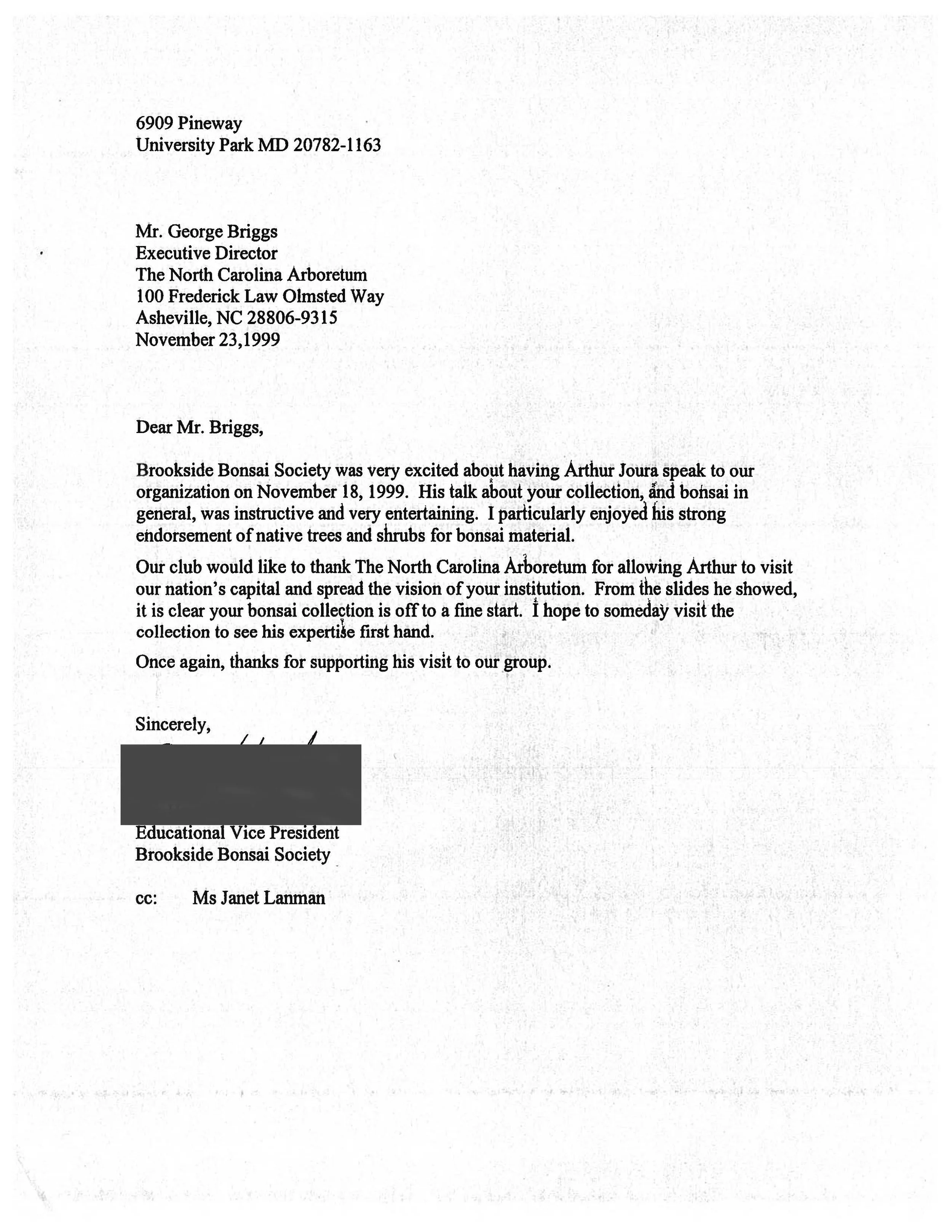After Japan
"You have to do everything you can, no matter what it takes. You have to make the most of what you've got, be it more or less. And you have to start from here, right here, where you are, with what you have! Do what you can, with what you have, where you are." — Theodore Roosevelt
The trip to Japan turned out to be a tipping point — although, once again, I'm seeing from a distance what wasn't so evident to me at the time.
Traveling to another country to receive specialized instruction from an internationally recognized expert wasn't something anyone at the Arboretum had done before. The unique honor of the experience elevated my professional stature at work, while also lending credibility to the bonsai program. Bonsai was still trying to secure its place at the Arboretum. I was doing everything I could to bring more notice to our bonsai and succeeding in that effort, yet no official determination had been made regarding the future of the collection or the program. In a word, Arboretum administration was showing a real reluctance to commit.
To be fair, some amount of the hesitancy was attributable to where we were as an institution at the time. We were new and there were many ideas about what The North Carolina Arboretum should be, and these were coming in all the time from various corners of special interest. The Arboretum wouldn't be able to satisfy all of them and we were apparently not in a rush to fully commit to any of them. Bonsai got a jump on all the other interests by our acceptance of the Staples donation. I can't speak to the thinking behind accepting the donated bonsai collection because I was not involved in the process, but once we had the little trees we were obliged to at least keep them alive. Some amount of time and resource had to be committed to doing that, which secured bonsai's place in line. Still, there was ongoing, painstakingly careful consideration being conducted within the Arboretum as to what modes of horticulture should become areas of institutional focus. There was no guarantee bonsai would make the cut.
There was, I think, tentative support for bonsai in the offices of the Arboretum where decisions were made. But bonsai at the Arboretum had one energetic high-level supporter in Dr. John Creech, which is what makes him a critical character in this story. Dr. Creech was working behind the scenes the whole time. He had the Executive Director's ear and served on the Arboretum Board of Directors, and he was a bonsai partisan, for sure. He was deferentially respectful in his dealings with the Executive Director, never trying to throw around the weight of his international stature in the field of horticulture, but not unaware of his ability to influence, either. It was Dr. Creech's influence that got me to Japan. I suspect he also had something to do with me being issued new business cards for my Japan trip, announcing to the world that I was now officially a Curator. Right up until the time of my trip to Japan, my unofficial title was Bonsai Caretaker. Dr. Creech would have known how much difference the more honorific title would make to my Japanese hosts, so he likely advocated for the upgrade. He was probably also aware that once you give someone a title like that it's difficult to take it back.
When I returned from Japan my allotment of time dedicated to bonsai was expanded from three days to four. Even so, in light of the bonsai I had just seen and studied in Japan, the work our collection needed was more than imposing. The difference between our trees and those generally regarded as the best in the world was night and day. If I had come back from Japan thinking our bonsai had to be made to look like theirs I would have soon sunk into despair. Fortunately, I came back convinced that bonsai in America would never be what it was in Japan, so I needn't concern myself with trying to do that. I did see that our little trees were mostly young, scrawny and plainly wanting for development. I was optimistic about my ability to do the developmental work myself, to grow with the collection and make our bonsai better over time.
There was some talk before my trip that if I played my cards right my host and teacher, Mr. Nakamura, might donate some trees to the Arboretum collection. It turned out this was unlikely because of various importation obstacles, but also because Mr. Nakamura was at that time already grooming a large donation he would ultimately make to the Chicago Botanic Garden. I didn't feel badly about this — I never would have asked Mr. Nakamura to even consider making a donation. Great old Japanese bonsai like he had would not mix so well with the bonsai we had. I liked the trees we had. I never felt discouraged that they were the way they were because I wanted to be the one to make them better. After Japan I was ready to take up Mr. Yoshimura's challenge. If I was going to: "Find a new way to engage the public with bonsai", or somehow eventually create: "The Carolina school of bonsai", as Mr. Yoshimura proposed, I wasn't going to be able to do it with established old trees that had been designed in the traditional style. I'd have to figure out the new way and then build the trees that would embody it. Different is as different does.
Lots of other Americans had gone to Japan to study bonsai before I did and many more would follow in the ensuing years. Virtually all of them went with the earnest intention of immersing themselves in the culture of Japan and establishing ties there, hopefully returning as often as possible to study intensively, perhaps developing a long term association with a bonsai Master. I did not have a desire for any of that. Good thing, too, because my first obligation was to my family and my second to the Arboretum, and neither allowed me time to pursue the life of a Japanese bonsai ascetic.
Back in the United States, back to work, I picked up where I'd left off, pressing the bonsai agenda. I continued traveling all over the Southeast speaking to bonsai clubs and other organizations. Whenever I did a public demonstration or lecture I'd tell about the trip to Japan, showing pictures and recounting stories. I made sure the audience knew I'd gone there because that experience made me a more legitimate bonsai authority in the eyes of most people. Then I'd tell those same audiences about what was going on at the Arboretum, how we were honoring the tradition of bonsai as it is in Japan but putting our own spin on it, so it would be reflective of our own time and place in the world. I became a fairly competent public speaker and was generally well received. At the end of any given program, when the club president or whomever it was who had brought me in as a speaker, came up and said anything complimentary, I would ask them if they would mind writing out their favorable comments and sending them to the Arboretum. I gave them the Executive Director's name and asked that they address their comments to him. Many people did this, so a regular stream of pro-bonsai commentary flowed for a while to the boss's desk, until one day I received word indirectly that the point had been made and I should desist.
So it went. I did everything I could think of to promote bonsai and advocate for little trees to be part of the Arboretum's emerging identity. I was motivated by the belief that I had been presented with a once in a lifetime opportunity and must not fail to make the most of it. Dr. Creech, Mr. Yoshimura and a host of others had lifted me up on their shoulders and there was no time to lose. The Roosevelt quote at the start of this entry provided guidance to me in those days and eventually became a watchword for the entire Arboretum bonsai enterprise. No doubt, we could have used better trees to start with, and a few more years of study and development of my bonsai skills wouldn't have hurt anything. Maybe we should have hired a few more consultants to come in and work on the collection and give us professional advice, before we took on the challenge of inventing our own brand of bonsai. Maybe we should have survey-tested the idea of even trying to undertake such a mission before we committed any resource to it. That would have been a more measured and reasonable approach.
But if we had gone about it that way, I'm certain bonsai at The North Carolina Arboretum would never have happened.



